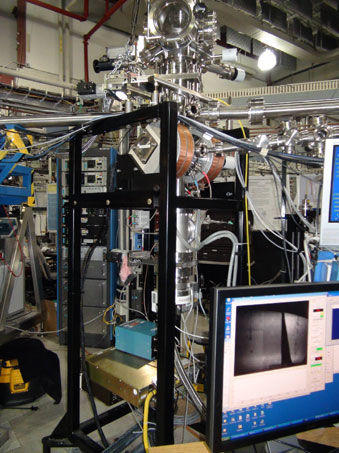Large Area Rapid Imaging Analytical Tool (LARIAT I)

Photo of the Large Area Rapid Imaging Tool Mark I (LARIAT I) at the National Synchrotron Light Source.
In contrast to scanning transmission X-ray microscopy (STXM), the Large Area Rapid Imaging Tool provides full field imaging capabilities over a relatively large area (100 mm2) with soft X-ray energies (0.1 keV to 2.2 keV). The LARIAT mark I (LARIAT I) achieves better than 100 μm resolution using magnetic projection electron imaging in a 0.95 Tesla field to shuttle photoelectrons emitted from the sample upon excitation by a monochromatic, tunable X-ray beam. The tenability of the beam supports the scanning of adsorption edges of low Z elements. The data is hyperspectral, providing a spatially resolved array of chemical, electronic, and physical structure information. In addition, direct control of the elliptically polarized undulator that feeds the beamline provides dichroic image acquisition to reveal molecular bond orientation as yet another dimension of the data field. The LARIAT has been designed with a large effective numerical aperture with minimal optical aberration. The mark I also features electrostatic and magnetostatic electron optical elements to discriminate energy and depth of the secondary electron distribution. The result is a nearly 100% efficiency in transmission of electrons through the optics to the imaging detector. The LARIAT is first of its kind and continues as a focus of development for the NIST Synchrotron Science Group.
The LARIAT project, which has developed both the mark I and mark II microscopes, has been achieved through funding of a NIST Small Business Innovation Research Grant, now in phase III, to Synchrotron Research, Inc.
Usage Information
Operating Schedule
LARIAT I is in the commissioning phase of development.
Access Information
LARIAT I is in the commissioning phase of development.

